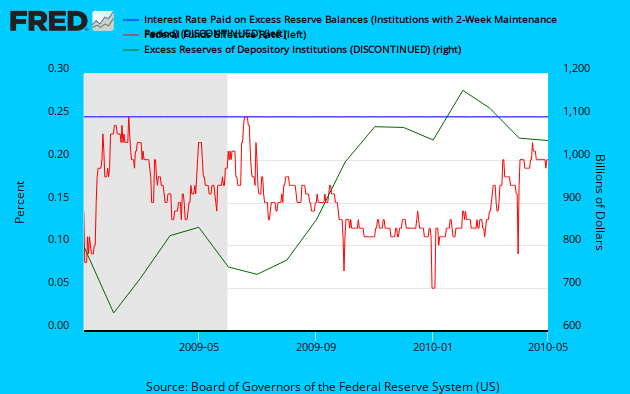What is paying interest on excess reserves? It's a tool that the Fed created and has been using since October 1, 2008 to keep inflation in check. The interest on excess reserves is the rate that the Fed pays depository institutions to keep excess reserves with the Fed. The theory goes that by holding interest on excess reserves above the federal funds rate, there is an opportunity cost that is created which is the difference between the two interest rates. FRED allows you to see this theory work in practice:
Notice that interest paid on excess reserves (the blue diamond line) has been at .25% and how an increase (decrease) in effective federal funds rate (red line) relative to interest on reserves leads to decreasing opportunity cost (increasing opportunity cost) associated with holding those excess reserves. We have been observing that a decrease in the effective fed funds rate (relative to interest on excess reserves) leads to increased holdings of excess reserves (green line). Many economists believe (including myself) that this Federal Reserve tool has been a main reason for inflation being subdued.

No comments:
Post a Comment